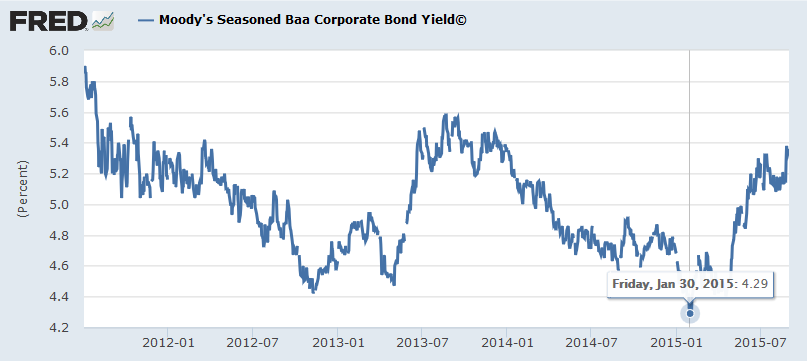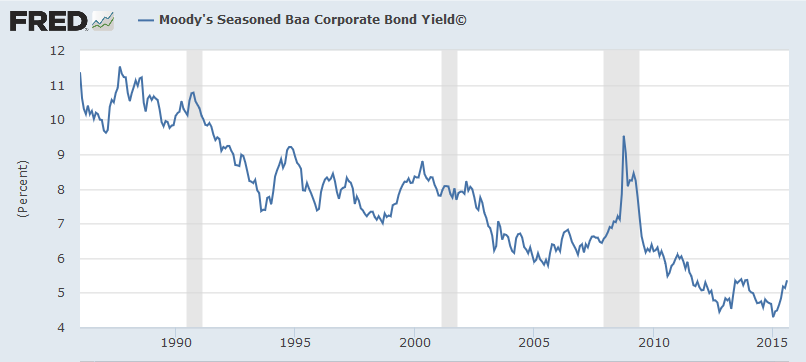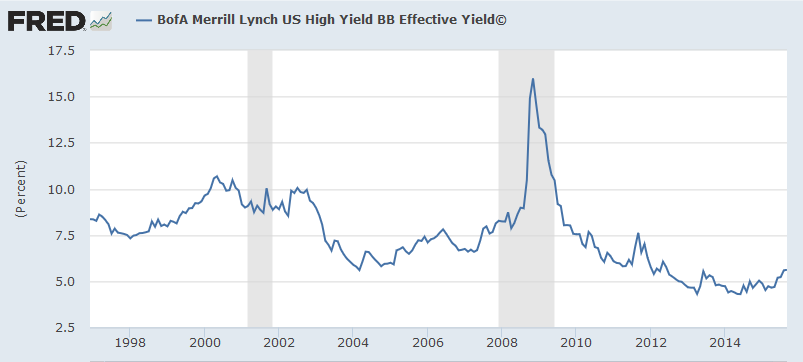With all the chatter about whether the Fed will hike on September 17 or not, let’s do an interest rate and bond yield recap of where various rates are, where they have been, and where they are likely headed.
Effective Federal Funds Rate

As of yesterday, the effective federal funds rate was a mere 8 basis points. Since April, it has been swinging from a low of 6-8 basis points to a high of 14-15 basis points.
I suspect the odds of a hike are close to 50-50.
The CME Fed Watch has the hike odds at 27% as of September 2. However, the CME does not consider a move to 0.25% a hike.
I do, because it clearly is.
The current Fed stance is 0.00% to 0.25%. With the effective Fed Funds rate hovering between 8 and 15 basis points, a move to a firm 0.25% would be about an eighth of a point hike.
Why nearly everyone expects a quarter point hike is a pure mystery to me.
If the Fed delays until December, we may see such a move (if the economy stays reasonably firm), but even then, I believe the Fed will baby-step this in a Market May I approach, quite similar to the childhood “Mother May” game.
Yellen vs. Greenspan
Moody’s Seasoned Baa Bond Yield Detail

Baa is Moody’s lowest investment grade bond (one step above junk). It is a measure of risk taking appetite. The rise in yield from January is an effective tightening of rates, albeit from a low level. The following long term chart adds perspective.
Moody’s Seasoned Baa Bond Yield

BB High Yield Bond Yield

BB is the top junk bond rating. Is the yield bottom in?
10-Year Breakeven Rate

Financial Times provides this Definition of Breakeven Rate.
The Break-even rate refers to the difference between the yield on a nominal fixed-rate bond and the real yield on an inflation-linked bond (such as a Treasury inflation-protected security, or Tips) of similar maturity and credit quality. If inflation averages more than the break-even rate, the inflation-linked investment will outperform the fixed-rate bond. If inflation averages below the break-even rate, the fixed-rate bond will outperform the inflation-linked bond.
The 10-year breakeven rate is about 1.63% as of August 31, 2015. Clearly the market is not expecting serious consumer price inflation for quite a long time.
Yield Curve as of 2015-09-01













Leave A Comment